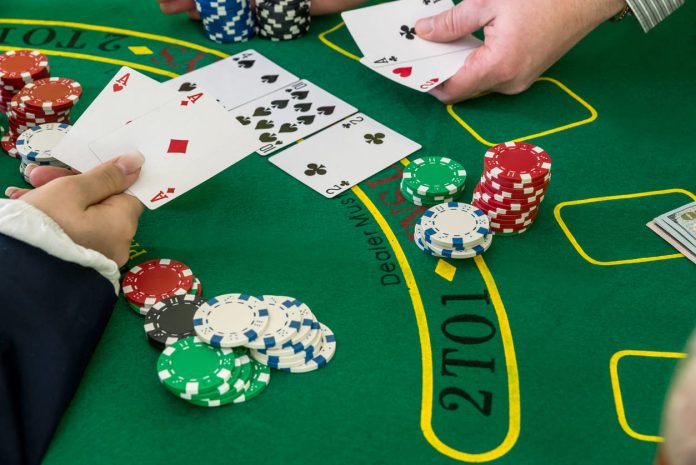Blackjack is a card game with pretty simple core gameplay, which all rests on how close a player’s hand gets to the value of 21. It’s a game that’s been around for hundreds of years in one form or another.
One of the ways the game has evolved over time is in the various hand signals that players will use to indicate their intentions to the dealer. You’ll see these if you play at a physical casino table, where communicating clearly without the need for verbal exchanges is especially important.
But even if you only plan to play online Blackjack, it’s still good to know what these hand signals are so that you have an even greater understanding of the game and its rules.
The purpose of Blackjack hand signals
Hand symbols play an important role in the flow of a game of Blackjack. They’re a universally understood way for the player to tell the dealer exactly what they want to do on their turn, without having to use words. This is especially useful if the game is happening in a noisy environment!
When playing a game in a land-based casino these signals are also important for making sure that the establishment’s surveillance cameras accurately capture the action. With players all using clear signals of intent it’s far easier to establish the facts in any potential disputes.
What are the common hand signals?
1. Hit
The most basic action in a game of Blackjack is to ask the dealer to give you another card. If a player’s initial hand value is on the lower side, then they’ll probably want to hit in order to get closer to 21.
How players signal that they want to take a hit is slightly different depending on the variant of Blackjack being played. In games where the player’s cards are dealt face up the hit signal is made by tapping the table with a finger.
But if the cards are kept face down, players will lightly scratch the table with their existing cards to signal the dealer for another hit.
2. Stand
When a player is happy with the value of their hand and doesn’t want to take any extra cards, they will choose to stand.
In games with face up cards, the player will wave their hand horizontally over their cards, keeping their palm down. This is a clear signal for no more.
With face down cards, the stand signal is made by sliding their cards under their placed chips without showing them to the dealer.
3. Double down
Choosing to double down is a more specific action, where the player opts to double their original wager but committing to being dealt one more card before standing.
There’s only one signal for this one, with the player placing the additional chips on the table next to their initial wager and then pointing with a single finger to the deck. With this action in particular you’ll want to make the signal both clear and deliberate, since it’s a pretty major move.
4. Split
This is less common since it requires players to get dealt two initial cards of the exact same value. In those cases, players can opt to split their hand in two with a separate wager on each.
Signalling a split requires you to place an equal amount of chips next to the original wager, before making a V-shape with your index and middle fingers.
5. Surrender
Not all casinos offer the option to surrender, but some games do. This allows players to forfeit the hand but reclaim half of their wager by doing so.
The signal for a surrender is drawing a horizontal line with the finger across the table, behind the wagered chips.
And now you know all the major hand signals used in Blackjack. The most important part of using these is to make them clear so that the dealer can easily tell what you want to do.
Disclaimer: This article contains sponsored marketing content. It is intended for promotional purposes and should not be considered as an endorsement or recommendation by our website. Readers are encouraged to conduct their own research and exercise their own judgment before making any decisions based on the information provided in this article.


































